“We treat this Rap shit just like, handlin’ weight / What they want we give it to ‘em, what they abandon we take / Hit a rapper with consignment, let him know what’s at stake / Put his ass in the studio, let him cook up a cake / When it’s hot, get him a money spot in every state / Like the wiz in Camelot, the mom-and-pop’s is the gate…” –Jay Z, “Rap Game Crack Game.”
TIME magazine featured Jay Z on the cover of its “TIME 100” issue last April. It was Jay’s second appearance on the magazine’s annual list of the world’s 100 most influential people. Conveniently, the publication preceded the release of Magna Carta Holy Grail by just a few months. New York City Mayor Michael Bloomberg penned Jigga’s profile, a task executed by Russell Simons for Jay’s 2005 appearance on the revered list. The billionaire mayor kept his contempt for the Ed Koch-era Sean Carter concealed behind his words of praise for Jay Z. Perhaps oblivious to his own disingenuousness, Bloomberg displayed his innate plutocratic embracement of wealth, while his policies reflected disdain for low-income minority communities, which Jay might call “Where I’m From.”
Although I’m not particularly fond of Hov’s recent material, his status continues to escalate beyond any clichéd conceptualization of the American Dream. Jay’s achievements far outsize those of his contemporaries with similar backgrounds of crack-laced Horatio Alger stories, most closely rivaled, perhaps, by 50 Cent. But among today’s contemporary emcees, that archetypal drug dealer turned rapper no longer holds the same relevance. If Jay was the Michael Jordan of drug dealers turned rappers, 50 Cent was Kobe Bryant. And for good or ill, no LeBron James of Crack Rap appears on the horizon.
Has the hustler/rapper image has lost its allure? Has Hip Hop simply matured? Has a common sense epidemic caused today’s decrease of former drug dealers in Hip Hop? Perhaps some causality lies in all of the above. But an indisputable causal relationship between societal conditions and Hip Hop’s musical content appears most evident in how drug dealing’s respective emergence and fading favorability as subject matter correlate with the respective emergence and subsiding of the 1980s crack epidemic.
Trap Muzic: Perpetuating The Dopeman Archetype
“Things can’t stay the same / Somebody gotta break the chain / Put some big money back in the game / We havin’ big money and we at it again / But can you handle it maine / Or would rather be grimy doing scandalous thangs / You wanna ball, you can’t tell him he ain’t / ‘Cause if the music don’t pay he gone sell ‘em the ‘caine / All the crack babies are growin’ up now / They got ADD, throw it up and act wild…” –Too Short, “This My One.”
Ice Cube once said that part of the reason he made the movie Friday was to showcase, through a comedic lenses, the normalcy of daily life in “the hood.” Preceding cinematic portrayals of life in these neighborhoods had either overlooked or underplayed life’s universal, mundane banalities.
“We had all these images, [like] Boyz N The Hood [and] Menace II Society, showing how we grew up,” Cube said in the special features intro on the Friday DVD. “This right here was showing how we grew up from a whole ‘nother light. It ain’t all bad in the hood.”
But the misperceived monolithism didn’t come from Hollywood portrayals alone. Ice Cube himself helped to revolutionize a trend that made drug dealing synonymous with Hip Hop. The Cube-penned lyrics that propelled Eazy-E to stardom in the late ‘80s subsequently began the trend of former drug dealers transitioning from the dope game to the Rap game.
This trend eventually evolved into the predominant archetype of the Golden-Era. In 1993, a charisma-filled, unabashed former crack dealer named Snoop Dogg had achieved almost immediate commercial embracement, and remained publicly adored for the next two decades. In New York, Biggie, Jay Z, and Nas made crack slinging seem as elemental to Hip Hop as breakdancing has once been. Self-imposed monikers such as “Frank White” and “Nas Escobar” had become commonplace—and are partially responsible (along with the infamous Wu-Gambino era) for the primary stage names of some of today’s dubiously credentialed acts.
So, where have all the cocaine cowboys gone? Kendrick Lamar, Kanye West and Kid Cudi probably dominate my iPod with the same frequency that Biggie, Jay Z, and Nas had once occupied my tape deck. Maybe you like J. Cole, B.o.B., and Lupe Fiasco. Preferential disputes aside, the drug dealer turned rapper archetype has largely faded from existence—certainly so among today’s Top 40 artists who’ve have maintained underground respect throughout commercial ascendance.
Despite my affinity for the era of It Was Written and Reasonable Doubt, I’d argue that material from today’s comparable artists displays a maturation of the genre, or at least a paradigm shift away from criminality. Kendrick Lamar’s good kid, m.A.A.d city, echoed Friday’s theme of regularity and carried an aura greatness on par with classics such as Illmatic and Get Rich Or Die Tryin’ (though I feel it’s most comparable to Aquemeni).
Furthermore, I think the archetype’s dissipation signifies some overall societal progression, in the same way that its emergence reflected the societal ills that had plagued its era. The archetype’s fading popularity correlates with steadily declining crime rates, particularly drug related violence, which spiked in the late ‘80s and early ‘90s. And its stronghold on Hip Hop actually followed the crack epidemic’s most violent years.
It’s probably worth noting the current proliferation of prescription drug abuse, which tends to enrich corporate plutocrats, who, we can safely assume, never harbored any desire or even any ability to Rap. But I digress.
Born Into The ‘90s: Redifining Dope
“It’s only crack sales making niggas act like that. Back in the days we could scrap, now you lay on your back.” –Prodigy of Mobb Deep, “QU Hectic.”
In 1989, drug related homicides had peaked nationally. As the malignant spread of crack addiction reached epidemic proportions, more than 1,400, or 7.4%, of the nation’s 18,954 murders had some connection to the dope game, according to U.S. Justice Department data.
Crime peaked to the echoes of ‘88 anthems from both sides of the spectrum. Public Enemy’s “Night of the Living Base Heads,” counterbalanced the subtly glorifying undertones of N.W.A’s “Dopeman.” Much of the music from this era had polemically attacked anything conducive to negativity. But it also spawned the following era, in which proclamations of “two for five,” muffled the warning cries of “self-destruction.” Essentially, it was much more Eazy-E than Chuck D.
Prodigy of Mobb Deep summarized this sentiment in the line quoted above, on the 1995 album The Infamous. By 1997, Chuck D’s voice, once synonymous with positivity, served as the sampled countdown on Biggie’s “Ten Crack Commandments.” Around the same time, Master P’s “Ghetto Dope,” taught us how to “ma, ma, make crack like this,” a pun on “ma, ma, make ‘em clap to this,” from Eric B & Rakim’s “Eric B. Is President.”
How To Deal: The Real American Gangster(s)
“Blame Reagan for making me into a monster / Blame Oliver North and Iran-Contra / I ran contraband that they sponsored / Before this rhymin’ stuff we was in concert…” – Jay Z, “Blue Magic.”
In 1992, some 15 years before Jay Z spit the above quoted line on the American Gangster album, The Geto Boys depicted our government’s hypocritically institutionalized criminality on the track “Damn It Feels Good To Be a Gangsta.” It’s a timeless theme, with a final verse manifested in a hindsight perspective of former President Ronald Reagan, particularly how his policies decimated low-income minority communities. This sober analysis of the Reagan Era informs on the social context that shaped Rap music’s Golden Era.
Reagan-bashing raps focus primarily on the administration’s role in the expansion of two commodities; cocaine and prison inmates. On 2012’s “Reagan,” Killer Mike lambasted the former president and his fall guy, Oliver North, for the infamous Iran-Contra scandal, but further condemned Reagan’s economic policy, which incentivized massive imprisonment.
The Fallout From The Ronald Reagan Era
“And thanks to Reaganomics, prison turns a profit. Because free labor is the cornerstone of U.S. economics.”—Killer Mike, “Reagan.”
I’d argue that Reagan—or the philosophy he personified—employed plutocratic policies to create a level of social mobility hindrance essential for the preservation of a permanent underclass. But even the most Hip Hop aversive, conservative zealot (Bill O’Reilly, anyone?) couldn’t deny the relevance of crack and prison in Reagan’s legacy.
Under Reagan, the rebirth of prison privatization—an archaic concept abandoned since the 1866 end of the Convict Leasing System—coincided with unceasingly prevalent crack addiction. And this was supplied, in part by the U.S. Government’s role in Iran-Contra. Coincidentally, the use of draconian mandatory minimum drug sentences expanded under Reagan, swelling the prison population like legislative steroids.
Killer Mike contextualized this oppressive atmosphere in “Reagan.” He provided a social studies lesson, unavailable in our sanitized scholastic system. And while “Blue Magic” lacked that professorial tone of “Reagan,” Jay’s casual name-dropping carried undertones of, “go Google this shit if you haven’t heard of it.” A similar sentiment pervaded Kendrick Lamar’s Section 80 mixtape in 2012. Lamar refrained from sociopolitical specificity, even on the song titled “Ronald Reagan Era,” but he depicted the social conditions under which Reagan era children lived, particularly in the communities where cocaine and prison hit hardest—in his case, Compton.
Change The Game: Lessons Learned From The Crack Era
“Fuck the system, at Lady Justice I blaze nine / Your Honor, I no longer kill my people, I raise mine / The soul of Mumia in this modern day time…” —Jay Z, “Dope Man.”
Hip Hop now seems endowed with an influx of intellect, whereas the ‘90s saw a phalanx of ex-drug dealers caught in a conflicting moral paradox of repentance and rebellious braggadocio. No matter how much I appreciate the alchemistic brilliance of creating Golden Era Rap classics such as “Ten Crack Commandments,” from the societal led of crack addiction, it’s worth forgoing such records if their absence is indicative of societal progress. And that progress seems verified beyond quantifiable data.
In 1998, about one week after Jay Z released Vol. 2… Hard Knock Life, the Nobel laureate Toni Morrison, published an essay in the New Yorker, which hyperbolically denounced the possibility of a black president in the near future. Morrison metaphorically referred to then President Bill Clinton as “our first black president,” not as an honorable comparison, but mainly because of the unyielding persecution he encountered.
“After all, Clinton displays almost every trope of blackness: single-parent household, born poor, working-class, saxophone-playing, McDonald’s-and-junk-food-loving boy from Arkansas,” Morrison wrote. “The always and already guilty ‘perp’ is being hunted down not by a prosecutor’s obsessive application of law but by a different kind of pursuer, one who makes new laws out of the shards of those he breaks.”
While Magna Carta Holy Grail bears no qualitative parallels to Vol. 2… Hard Knock Life, that in no way undermines the significance of Hip Hop’s foremost former drug dealer exchanging text messages with our first literal black president. Jay Z certainly warrants a far more complex description than merely a “former drug dealer,” and his adroitness propelled his penetration of society’s most elite social circles. That’s the kind of potential possibly wasted to unnecessarily long prison sentences, which Jay luckily averted. Sure, a civilized society needs legal deterrents from destructive behavior, and I’d never advocate legalizing cocaine, but illogical policies have cost us dearly in human capital. Obama’s Attorney General, Eric Holder, (whose foreign policy I loath) recently decried the use of mandatory minimum drug sentences, and issued what amounted to an unofficial cease and desist decree of the draconian punishment. Holder gave his speech on Monday August 12th, only a few hours after a federal judge issued the ruling on stop-and-frisk, which essentially said that Bloomberg has just as little regard for citizens’ fourth amendment rights as he displayed for NYC’s overwhelmingly popular term limits legislation.
The facts suggest a remorseless Bloomberg in the hypothetical face of a stopped-and-frisked and subsequently football number-sentenced Sean Carter. But a well-positioned Jay Z can now subtly label Mayor Bloomberg an elitist, borderline racist, by denouncing stop-and-frisk on HBO. Yet the mayor—either out of political spinelessness or delusional elitism—must acquiesce to Jigga’s ambassadorial position when called upon to lionize this drug dealer turned historical icon in TIME magazine.
Who ever thought that Hip Hop would take it this far? Can anyone take the drug dealer’s dream further than Jay Z? Perhaps not, but Hip Hop can certainly further our understanding of why such a dream even existed. And with the same spirit of unabashed honesty that gave us songs like “You Must Love Me,” Hip Hop appears better equipped than conventional academic resources, to teach the “social studies,” of the aforementioned era.
Michael Cohen is a freelance journalist from Staten Island, New York. He has contributed to the New York Daily News, The Village Voice, Urban Latino Magazine and others. You can follow him on twitter @mcohenSINY

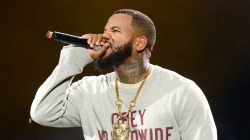
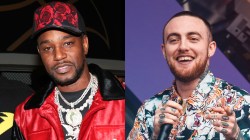
![Method Man Admits He Didn't Like Drake's "Wu-Tang Forever": "I [Wasn't] Getting On That"](https://hiphopdx.com/wp-content/uploads/2025/12/method-man-drake-wu-tang-forever-remix.jpg?w=250)
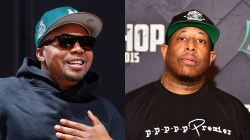

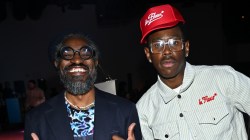

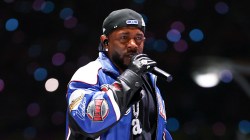
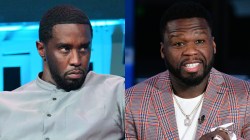
I lost all interest when you failed to mention anything about young jeezy who is one the most successful “Dope dealer turned rappers” smh
Or TIP or Gucci or Master P
Guys up top..Exactly !!
Or Big Guwop. The realest ever!!!
YES the drug dealer turned rapper is over with!!!!!!! THIS is the dawn of a new age : THE GAY, DRUG ADDICT TURNED RAPPER IS UPON US! THANKS WAYNE! HIP HOP IS DEAD!
Came here to say this.
HA! HA! HA! ….***sniffles***….
Gunplay is a dope customer turned rapper!
props to the author for recognizing Godfather 50 Cent is the Kobe Bryant of this drug rap
WHAT??????
How is there no mention of Rick Ross???
nah just kidding!
good riddance…what about Master P though?
LUPE HAD CHILLY, KENDRICK HAD SCHOOLBOY Q, 2 CAHINZ IS A DRUG DEALER TURNED RAPPER, ASAP ROCKY SOLD, DANNY BROWN SOLD, WIZ HAD BURNER. RAP AND DRUGS ARE STILL VERY TIED TOGETHER.
Its such an old played out story. Being a drug dealer is nothing special. There have been like 10000000000000000000 dope slangers in the history of rap. You shouldnt be able to sell records bc of that.
No mention of Pac? The fuck? This writer Michael Cohen needs to eat a fat dick.
Pac was never no drug dealer and i dont think he really rapped that much about selling dope did he?
Pac mentioned at one point that he tried to sell drugs but was lousy at it and in turn was taken care of by his peers.
My point exactly. The writer should’ve talked about how not everyone was a drug dealer turned rapper in the 90s era – that in fact, one of, if not the most influential rapper of all time, was not in that category.
How in the FUCK can you have an editorial on drug-dealer rap, and NOT mention OB4CL? That’s seriously the dumbest thing I’ve seen ever. This is like talking about the evolution of lyricism and NOT bring up Rakim.
That’s crazy right? And I know the writer. He is from Staten Island.
I sell dope, fuck hoes, rock ice
throwin up gang signs, my life
I think dudes point is although there are still dopeboy rappers and wanna be drug king pens the culture is shifting so that now for every one Rick Ross at the top of the charts there is a Kanye, a Drake, and a Macklemore. Hip Hop is growing up and evolving with the internet we are no longer forced to listen to only what major labels force on us , so a lot of us are making more intelligent choices choosing content , creativity and lyricism over over force fed thuggery. And the labels are noticing and signing up more acts that have a broader perspective of what can be done creatively within the culture and music that hip hop represents.
fat joe da gangsta sold crack, terror squad are terrorists, big tymers, no one can mess with joe. TERROR SQUAD………………………………………
The problem with the R’s and D’s is they want to keep both the police state and the welfare state (occasionally you have the R’s saying get rid of welfare and occasionally you have the D’s saying get rid of the police state, but otherwise they agree).
We should rid our communities of both and people will be more prosperous.
People only need a handful of useful laws which preserve freedom and that’s it (don’t steal, don’t kill, traffic lights).
The War on Drugs and the War on Poverty, stop-and-frisk, government schools run by government employees, all of this is slave law not fit for free men. It is the meritocracy versus an aristocracy. The aristocrats are the politicians and their army of government employees that contribute no consumer products/services to society, but simply leech off the rest of us, lock fathers in prison, harass young men, make young people go to schools where they come out with 0 job skills, regulate decent businessmen to death until they move out the city or worse out of the country.
Government employees are not a group of aliens or other world people, they are regular folks like you and me. It’s a job. Furthermore, get rid of what exactly? We NEED more intervention with lost children, the severely poorly educated and the truly destitute. A handful of basic laws doesn’t do anything to solve the current crisis of poverty BASED problems.
Could it be that this poverty is because of cultures of dependency and constraint? The opposite of freedom. He is talking about getting beyond the petty bickering and looking at first principles.
Good article. I would simply say some rappers are more enlightened than others and a lot of it has to do with age and experience. Jay Z for one is not oblivious to what’s going on around him, you can tell that just from his lyrics alone. He plays the system as the system plays him thus his rise to power. What he does with his power is still a work in progress.
Good points. BUT don’t all you Hollier than thou cats act like this country and many of it’s biggest institutions wasn’t built off of criminal activity. OLD money and blood money is the bedrock of most affluent families in America and the world for that matter.
my stepmum just purchased an awesome year old Mercedes SLK-Class Convertible only from working part time off a laptop… helpful site… http://www.Cafe44.com
YES the drug dealer turned rapper is over with!!!!!!! THIS is the dawn of a new age : THE GAY, DRUG ADDICT TURNED RAPPER IS UPON US! THANKS WAYNE! HIP HOP IS DEAD!
With all the rappers blowing up in the past several years claiming trapper status- Rick Ross, TI, Lil’Wayne, the list goes on– hip hop has a hell of a long way to go before the D-Boys genuinely start to become a co-genre instead of the DOMINANT genre in hip-hop. Drake aligns himself with a “gangsta” crew in Cash Money; B.O.B. aligns himself with the dozens-of-machine-guns buying T.I.; Wale’ is aligned with the drug-kingpin-name-snatching Rick Ross. So it’s clearly still important to have “trapper-affiliated” status even if the rapper him (or herself) doesn’t really delve into first-person crime rhymes (that often).
Well said. It’s almost like a co dependency of sorts. The gangster persona needs to be relatable to the mass consumer so it aligns with a non threatening persona. On the flip, the safe rapper needs the co sign from the certified street dude in order to be accepted in the urban market.
The crack epidemic was from around 86-94 making this article all the more useless. Why would rappers talk about selling crack when the street is basically devoid of crack, at least not like it used to be in the early 90s.
i do not want to hear any more dopeman rap. Back in the 90’s when i listed to hip hop, it was stories of drug dealing that i never saw first hand. It gave people a view into a world that not everyone gets to see.
Nowadays i can not believe a rapper who comes out and states that they used to sell drugs. for 1, i wont believe them. Too many rappers claim they have sold this, kill that and it isnt believable. 2. Those stories have been told, so people do not want to hear them again.
I also believe that a drug dealer rapper is not as marketable as it was in the 90’s and early 2000.
Thi is bogus. Back in the day, we had de la, disable planets, next to cypress hill, ice cube. Never gave a shit. Dope music s dope music. People just want honesty and good music. This is why Drake and Jay-Z dominate.,
kendrick lamar and j. cole exist. your opinion is irrelevant.
Too bad Jay don’t spit lyrics like those quotes anymore. Maybe y’all should do an editorial about how Jay raps nonsense nowadays… no introspective side anymore…
No introspective shit? Did you listen to his new album? Nickles and dimes, jay z blue, heaven, oceans, even FUTW were all introspective as hell. The lyrical intricacy has declined, but his subject matter and lyrical imagery has evolved.
What a fucking idiot. Oceans alone holds more substance than the great majority of rap we’ve heard in 2013.
I hear you and all but its still a market for the gangsta shit cuz niggaz like chief keef (a terrible artist) are making money off that alone. I’m glad the gangsta shit is fading cuz most the rap niggaz that talk that shit aint really gangsta like Rick Ross, Plies, Lil Wayne, Tyga, …..i could go for days.
Really shouldve mentioned T.I. Trap muzik creator. One of the most successful dope boys-turned-rappers
crack rap has fallen off cause niggas figured out almost all the rappers that talked that shit never lived it
Dope boys aren’t in rap anymore because the main stream media and big record companies are all about the feminization of the black man. They’d rather see pussy niggas in skirts and blouses than d boys in black t’s wit a rolly.
“We dont believe you, you need more people” thats all there is to know!
Say what you want the only real nigga is GUCCI MANE
The context for “Drug Rap” has changed. Hip Hop has done everything but mature. OVER EXPOSURE and a high level of COMMODIFICATION are the main catalyst behind this. The hood is still a death sentence just as it was in the 90’s.
Privatizing of the prisons has turned Ghettos into true Police States. Police and Informants are everywhere. Harder laws are putting away Black men and women away for longer stints. Jobs are nowhere near plentiful for them as they were in the 90’s.
This was all planned. White Supremacists gave the hoods drugs and guns, sat back through the 90’s all while demonizing them on television and capitalizing off of them by commercializing the culture. Then in the 2000’s after displaying them to be wild and dangerous they began the campaign of super incarceration for profit.
Blacks in the hood are under more intense pressure from the Law then they ever were in the 90’s as well as dealing with all the destruction from the 90’s early 2000’s. So niggas gettin soft as a defense mechanism cuz they now know that thug image makes you a sittin duck. Even if you ain’t in the hood. This has spread sub-conciously to all blacks, fueling blacks desire to assimilate (intergrate).
The Rap you hear today is a perpetuation of this. This has nothing to do with maturing. It has everything to do with STOMPING on Black lives for fake federal reserve notes and Black people being more afraid to be Black. Dont get it twisted.
really eh?
its takes talent and confidence to write an intelligent article without forcing intelligent language. to write something with down to earth language and not be pretentious. you sir do not have that talent. the level of “try-hard” in this article is on HIGH.
Ive never believed jays drug talk he a dope mc n business man but he has always come across as soft to me. I just never found him believable when he claims to have been selling all this weight being in shootouts yet he never had an arrest till like 1999 it don’t add up
some criminals are smarter than others.
not everyone gets caught and goes to jail like gucci mane every 5 months
Now its about Jay rapping about paintings, art and materialistic BS that cannot even begin to resonate with the life of a little dude sitting in Marcy Projects, who grew up a crack baby, and inherited the decimation of the black community. Crack rap never talks about how cats do a 25 year bid, Jay never touched on that, and never would because if he was really living that life, he would have seen either some bars or a bullet. Ask Klein, the dude who those rhymes are really based on, who actually had to do that bid. In retrospect those lyrics sound like a script from a superfly movie, where you can make the last drug deal and get away with it, that’s not reality, and like the old head said in bastards of the party when asked what did movies life superfly do to niggas in the hood, he responded, it got a lot of niggas in the cemetary. Stop holding Jay out as some Scarface turned mogul. So you wonder what happened to drug dealer turned rapper, its plenty of them, they are all on worldstar posting videos, while still hustlin in the trap. If you were really in the hood, you would still know that, the little dude selling crack, pills and weed, is still trying to rap, he just making music now in his crib and postin shit on sound cloud and youtube thinkin one day he is gonna get on by how many views he’s getting in between baggin shit up.
I can, I love art, love getting money, don’t see the problem here
Exactly. Dude wrote up a whole pretenius bullshit of nothing to hide his basic ass motive.
I believe Jay-Z may have been around some dudes, that have sold the weight he talking about. Like the look out or the driver or whatever but I don’t see him on that Tony Montana stuff he brag about either. For him to shed all traces of a hood dude in a period of ten years is amazing. He says he sold dope till he got shot at and decided to use his cash for roc-a-fella and release his album. He was 26-27 years old. A little under 20 years later and dude may as well be the black Warren Buffet! Jay-Z is one of my favorite artist because he ideas and concepts and flow is sick but even for myself trying to live the “right way” but growing up in rough neighborhoods, I still find myself with more knocks against me and bad habits than Jay-Z. I love Hov artistically but dude exaggerating his history.
Who the fuck are you to decide if magna carta bears any “qualitative parallels” to volume 2? Your job was to write an article not give us your spin on what YOU like. You did that several times in this article…
if i wanted spin id go watch fox news..
This site gets worse and worse with every fucking article.
the “journalists” on HHDX are a total joke
i just use this site for interviews and new singles, don’t bother with the articles
what Peter answered I am amazed that any one can get paid $9466 in four weeks on the computer. you could look here… http://www.Cafe44.com
Meek Mill is signed to and co-signed by the correctional officer lying fraud William Roberts who has had 1 album go platinum once in his career. Brought us albums such as The Gifted and Dreams and Nightmares.
Suburban whites who don’t have the street IQ to know the difference between a C.O. and a policeman are still heartbroken that Ross doesnt know Pablo Escobar and that JayZ didn’t lose 92 Bricks.
The Streets and people who listen to music for entertainment don’t concern themselves with weather or not Dr Dre was ever a “Gangsta” or if Pusha T ever sold kilograms or if Snoop ever lived off the earnings of a prostitute….we listen to rap-music for the sound of the instruments and the slickness of the poetry.
Suburban whites listen to our music so they can live out a “Ghetto” fantasy through the lives of our rappers which is why they focus so much on what they perceive as real/fake or fabricated/authenticated…our music is their only means of getting a street education so they actually attempt to believe song lyrics are supposed to be biographical criminal confessions.
I think they should stick to listening to Emenim rap about serial killing or discuss how “fraudulent” it was for Emenim to make racist rap songs and then try to sue the Source Magazine o keep them away from the public.
you’re a fool and you are straight up wrong if you think niggas in the hood never cared about how legit an MC was back in the day…
the fact you think this clearly shows you were not a rap head during the late 80’s and the 90’s
keeping it real was crucial during the golden years, your career in the rap game was OVER if niggas uncovered you as a fake…
sounds to me like you’re some white boy from a nice family who’s projecting his own insecurities onto others
lol Rick Ross fans are so defensive
it’s declined because rap is PUSSY now
the 90’s are long gone, rap is progresive and gay-friendly music in 2013
nobody raps about being from the streets anymore because record label CEO’s are looking for artistic faggoty kids to become the next rap stars instead of looking for drug dealers and stick-up kids like they used to
fuck rap
All these super tough guys from back then were just lucky that social media wasn’t there.
^ nobody said they were “super tough guys”
they were just from the streets and brought that into their music
rappers in 2013 are from art/drama school
We’re in the soft pretty boy era of rap now. Now its all about your looks, image, and making music about females, money, drugs, clubbin, this, that, and the third.
You can start with Drake. This guy is a pseudo singer/rapper. He’s as pop as it gets and only in TODAY’S ERA can a guy sing for 65% of his album and still be called the “best rapper” today.
Look at Pitbull. This guy makes dance music with guest features CARRYING his album because on his own he’s not good enough a rapper to do it. But he makes dance singles that get play in the club that basically caters to the female audience.
Lil Wayne… Pussy, drugs, money, pussy… More pussy. Codeine. That’s pretty much what his lyrical content consists of and he’s been on a serious decline since Carter 3 and there are still young females who bump his shit.
Kanye West… No comment on him.
Chris Brown… R&B singer, wannabe rapper. Wannabe tough guy. Females go crazy over him, though.
That pretty boy shit is killing rap.
I aint buying nobody’s album just bc they sold dope. So fucking what?
I was with you til you mentioned Kanye.
i agree about how candy ass rap has become, but i don’t think it’s because of the dying trend this article is citing though. i think it’s just rappers trying to cross over. ok swell no more dopemen turned rappers hoooray. but why has rap declined as well?
Not to be petty but the Infamous was released in 95 and not 96. That is pretty bad for a hip hop writer not to know.
Can I have some crack?
No Hona Costello? He just dropped his song and got 5k plays already! His song high is over 90k yet these blogs fail to post him. He got over 250k plays total. Makes no sense. He’s the real representation of an indie artists. Not these fake ones who buy label marketing.
Listen here:
https://soundcloud.com/surrealgang
https://soundcloud.com/surrealgang
https://soundcloud.com/surrealgang
https://soundcloud.com/surrealgang
No Hona Costello? He just dropped his song and got 5k plays already! His song high is over 90k yet these blogs fail to post him. He got over 250k plays total. Makes no sense. He’s the real representation of an indie artists. Not these fake ones who buy label marketing.
–
Listen here:
https://soundcloud.com/surrealgang
https://soundcloud.com/surrealgang
https://soundcloud.com/surrealgang
https://soundcloud.com/surrealgang
No Hona Costello? He just dropped his song and got 5k plays already! His song high is over 90k yet these blogs fail to post him. He got over 250k plays total. Makes no sense. He’s the real representation of an indie artists. Not these fake ones who buy label marketing.
Listen here:00
https://soundcloud.com/surrealgang
https://soundcloud.com/surrealgang
https://soundcloud.com/surrealgang
https://soundcloud.com/surrealgang
You know gangsta rap is dead when COs are makin’ more money rapping than Gs.
no one forced any black person to smoke or sell crack, I think there needs to be some personal responsibility.
PERSONAL accountability is not the issue when dealing with large populations of people. At that point, you’re looking at culture and PERCENTAGES. Culture are the social norms you learn from your mother, immediate family and then your local environment. If your mother and immediate family are working, your greatest influence is your environment.
Simply put, ANY and EVERY race will fail at greater PERCENTAGES when you force them into high crime, low job quality, high drug, high police corruption, high depression areas.
Why does the middle class always move out of bad neighborhoods? Because they know that despite their BEST efforts, the neighborhood is more likely to pull their children down than if they were in a better atmosphere.
one of the best pieces I’ve reading concerning the progression of hip-hop. I mean the analysis is on point. Dope ass article.
agree about how candy ass rap has become, but i don’t think it’s because of the dying trend this article is citing though. i think it’s just rappers trying too hard to cross over. ok swell no more dopemen turned rappers hoooray. but why has rap declined as well? i’m all for that trend dying and all but what the hell has happened to the grittiness, and social commentary of rap/hip-hop. nobody is making anymore albums that sound like the diary, illmatic, me against the world, or ready to die. i feel like rap has went from being against the system to BECOMING the system. i guess you know what they say…he who fights monsters.
pusha t raps are getting old fast it will get boring soon and he is losing his energy over dope raps
TL;DR.